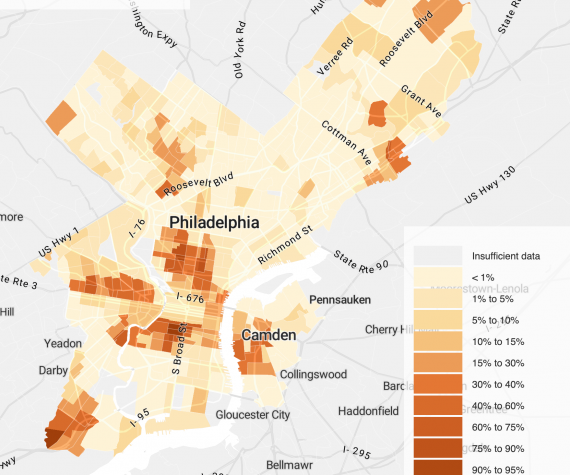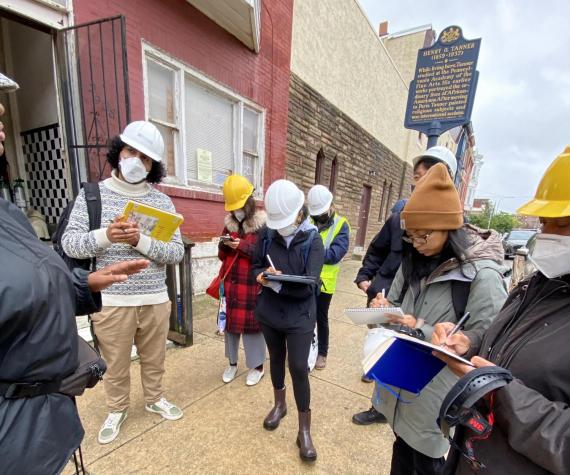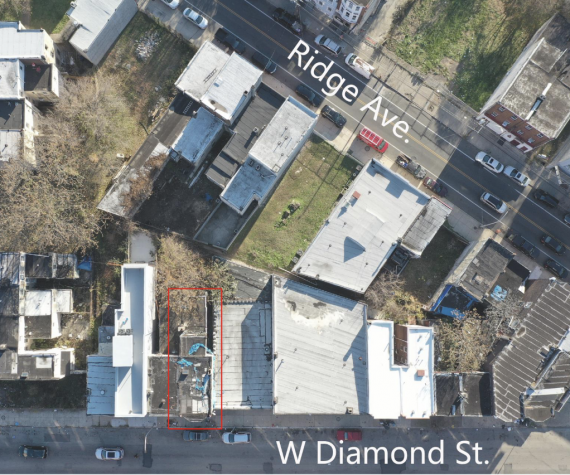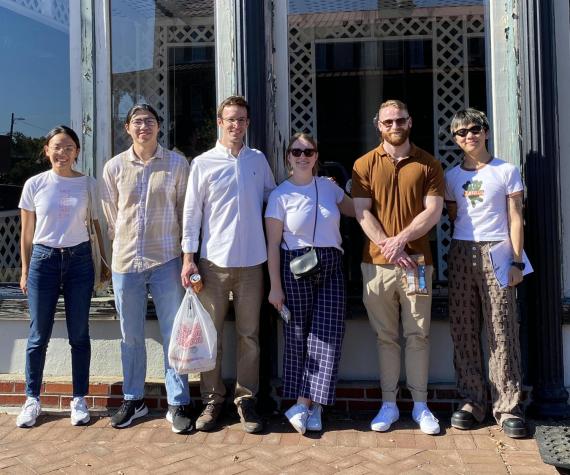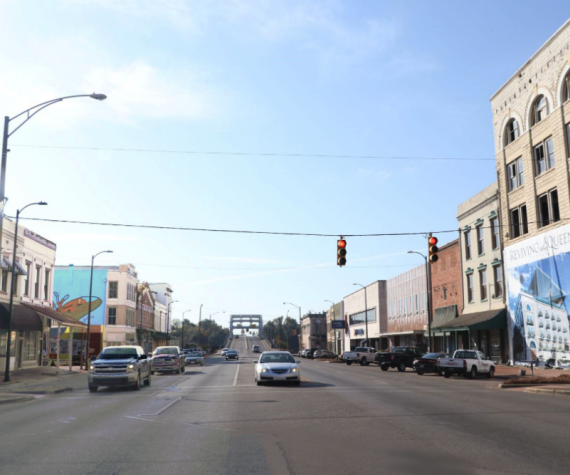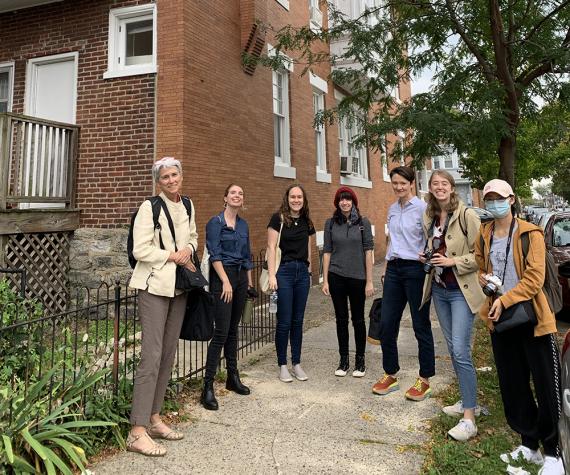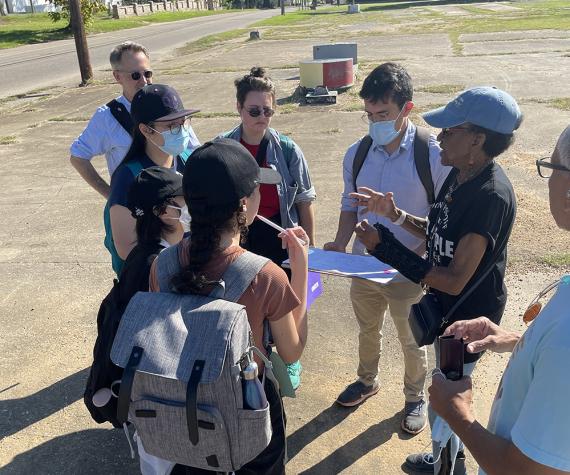Topics in Preservation & Public History
These seminars explore ideas related to public history and historic preservation. Themes of the course touch on history, architectural history, art history, cultural landscapes, cultural heritage, and material culture.
Spring 2024 // HSPV 6200 Revolutionary Approaches to Philadelphia's Black Heritage
Instructed by Amber Wiley
This seminar is a deep dive into Black heritage sites in Philadelphia, with the purpose of developing documentation and historic context around these underrepresented and threatened community assets ahead of the Semiquincentennial of 2026. The class grows out of a series of conversations between the Center for the Preservation of Civil Rights Sites (CPCRS), Black heritage stewards, architects, planners, creatives, and cultural producers in the city. To date, there has been no systematic investigation into Black historic assets in Philadelphia.
Historic Preservation Studio
The Preservation Studio is a practical course making architectural, urban and landscape conservation operations, bringing to bear the wide range of skills and ideas at play in the field of historic preservation.
Fall 2022 // Core Second Year HSPV 701-201
Instructed by Randy Mason and Brent Leggs
In Fall 2022, two groups of second-year students in Weitzman's Department of Historic Preservation were devoted to working in depth on Black heritage places - The Tanner House in the Strawberry Mansion neighborhood of Philadelphia and Downtown Selma, Alabama.
Fall 2021 // Core Second Year HSPV 701-201
Instructed by Pamela Hawkes and Randy Mason
The Preservation Studio is a practical course making architectural, urban and landscape conservation operations, bringing to bear the wide range of skills and ideas at play in the field of historic preservation. In Fall 2021, second-year students in Weitzman's Department of Historic Preservation were devoted to working in depth on two heritage places - Paul Robeson House & Museum in West Philadelphia, and the Peacock Tract neighborhood & Loveless School in Montgomery Alabama.
Advanced Studio: Reckoning With Civil Rights Sites
HSPV 705-001
Instructed by Randy Mason and Brent Leggs
Spring 2021
This advanced research/studio course explored the presence of civil rights issues and stories, their heritage, and opportunities for reckoning at the scale of the site and the landscape. We will ask how sites of civil rights struggles, triumphs and other legacies should be recognized, interpreted, preserved, managed and otherwise made visible? What particular issues attach to civil rights – and specifically Black – heritage places? How must the practices and policies of historic preservation adapt to serve the public interest in recognizing the historical and cultural significance of civil rights in telling the whole spectrum of American stories?
For their final projects, students workshoped preservation plans for the Marian Anderson Historical Society and Museum in Philadelphia and The St Pauls Missionary Baptist Church and Armstrong School in Macon County, AL in collaboration with colleagues at Tuskegee University’s Department of Architecture.




